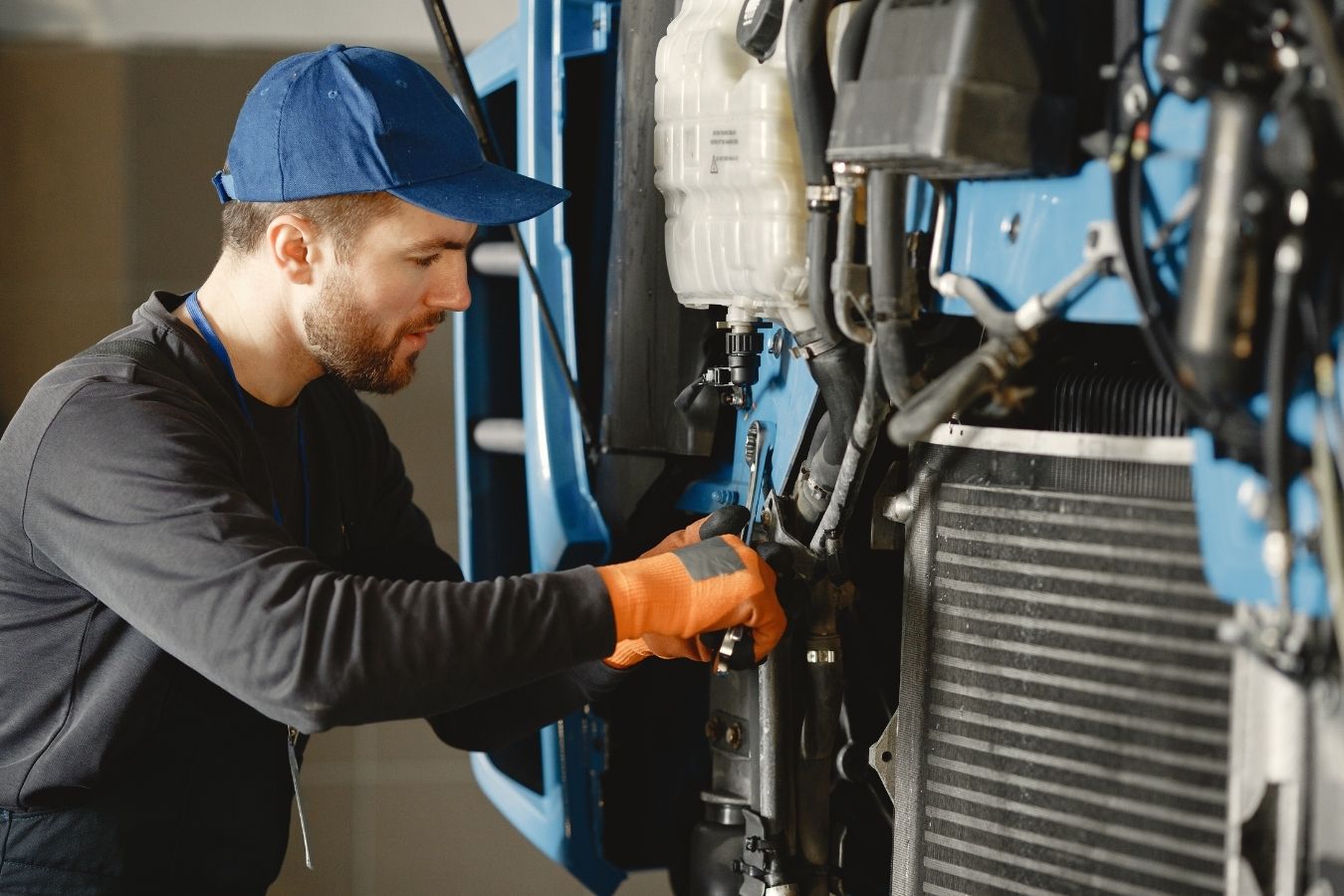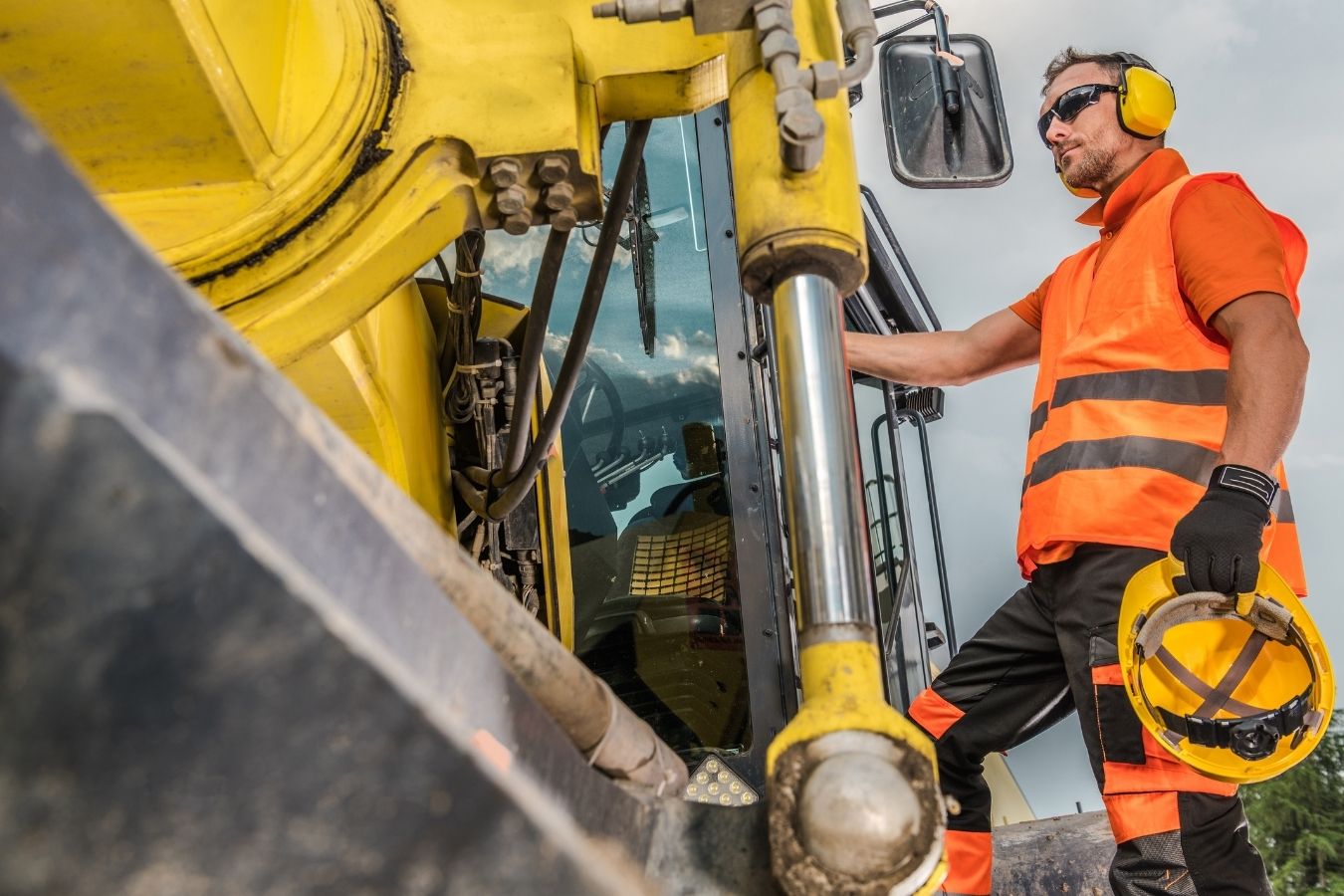
Renting out equipment sounds simple enough, right? Someone needs a skid steer or a pressure washer, you’ve got one available, and a quick signature seals the deal.
But here’s the truth: without a solid rental contract, things can go downhill fast.
From accidental damage to late returns to “I thought fuel was included”, it’s the fine print that protects your business, your equipment and your sanity.
In this guide, we break down the most important clauses every equipment rental contract should include, using real-world examples, simple language and practical tips for field service providers.
Whether you're renting tools, vehicles, or heavy-duty gear, this article will help you:

Before diving into the nitty-gritty clauses of your equipment rental contract, it’s important to get one thing straight: who’s who in this agreement? Clearly identifying the parties involved is the foundation of a legally sound rental contract, and it helps avoid a whole lot of “he said, she said” later on.
There are typically two main players in every equipment rental agreement:
Pro Tip: Make sure full legal names, business addresses, and contact information for both parties are listed right at the top of the contract. This isn’t just a formality; it helps in everything from billing to insurance claims to conflict resolution.
Before any rental agreement is signed, both parties need to be on the same page about what’s being rented.
You’d be surprised how often misunderstandings happen just because the equipment wasn't properly described in the contract. Is it the model with GPS or without? Is that trailer the 12-foot or the 16-foot one?
Details matter, especially when expensive gear is involved. Including a thorough, written description of the equipment is step one in preventing disputes and confusion. It also forms the foundation for accountability if something gets damaged, swapped, or returned incomplete.
Pro Tip: Use digital inspection checklists and photo logs in your CMMS (like FieldEx) to store and access this info anytime.

“How long can I keep it?” is one of the first questions renters ask, and your contract needs to answer it clearly. An open-ended or vague rental timeline can wreak havoc on your operations, especially if other customers are waiting on the same equipment.
A well-written contract should clearly spell out the rental start and end dates, renewal procedures, and late-return penalties. This keeps your rental schedule tight, your inventory moving efficiently, and everyone informed.
It also reduces those last-minute extension requests and “Oh, I thought I had it for another week!” moments.
“The Rental Period shall commence on July 22, 2026, and terminate on August 5, 2026. Should the Renter wish to extend the rental beyond this period, a written extension request must be submitted at least 48 hours before the scheduled return. Late returns without prior approval will incur a daily fee of $150.”

Nothing kills a good business relationship like surprise fees or unclear billing terms. If your customer doesn’t know how much they’re paying – or when – it’s going to cause friction.
The pricing and billing section is your chance to be completely transparent. Lay out how much the equipment costs to rent, when payment is due, what happens if it’s late, and what the renter should expect in terms of taxes or extra fees.
When done right, this clause helps you get paid on time, minimizes billing back-and-forth, and keeps the entire transaction clean and professional.
“The Renter agrees to pay a rental fee of $1,800/week, payable in advance. A refundable security deposit of $750 is due upon signing. Late payments beyond 5 business days will incur a fee of 10% of the outstanding balance.”
You’re renting equipment, not a free pass to do whatever the customer wants with it.
That’s where the “use and restrictions” clause comes in. This section helps you control how and where your equipment is used – because not every machine is meant for every job site or operator.
Whether it’s protecting your gear from misuse or ensuring only certified personnel operate it, this clause draws a clear boundary around acceptable use. It's a must for reducing liability, wear and tear, and operational risks, especially in industries like construction, pest control or facility management.
“The equipment shall be operated only by trained, certified personnel. Use for any purpose other than commercial landscaping is strictly prohibited. The Renter shall not transport the equipment outside of the State of Oregon without written consent.”

Here’s where many equipment rentals hit a gray area: who handles what when something goes wrong? Whether it's a simple oil change or a full-blown breakdown, your rental contract should clearly define maintenance responsibilities.
Daily upkeep, emergency repairs, reporting damage; all of this should be covered to avoid finger-pointing and unexpected repair bills.
By separating routine duties from major malfunctions, you protect your assets and keep operations running smoothly.
This clause also helps educate renters on what they’re expected to do, which leads to better equipment care and fewer headaches for you.
“The Renter is responsible for performing daily inspections and topping off fluid levels. All mechanical failures must be reported within 2 hours. If the failure is determined to be due to misuse or negligence, repair costs will be borne by the Renter.”
When your equipment is out in the field, you need to know you're protected, financially and legally. This clause outlines who’s responsible if the equipment is damaged, stolen, or causes an accident.
It also sets minimum insurance requirements, which is especially important in high-risk industries like agriculture, construction, and field service.
With the right wording, this section ensures that your business isn’t left footing the bill for someone else’s mistake.
It also gives you the right to request proof of insurance before handing over the keys, which can be a game-changer for risk management.
“The Renter shall maintain general liability insurance with a minimum coverage of $1,000,000 per occurrence. Proof of coverage must be submitted prior to delivery. The Renter is fully responsible for any loss or damage resulting from negligence, improper use, or theft while in possession of the equipment.”

How the equipment gets to and from the job site matters just as much as how it’s used.
This clause sets expectations for delivery, pickup and return. Will you handle delivery, or will the renter? Is the equipment supposed to be refueled and cleaned? Will there be an inspection?
Those are all key questions that should be answered up front.
A strong delivery and return policy ensures smoother handoffs, protects you from unnecessary cleaning or repair costs, and keeps your turnaround times fast and predictable for the next rental.
“Renter agrees to return equipment on or before the agreed-upon return date, in clean condition and full of fuel. Any cleaning or refueling required will be charged at $75/hour and $6/gallon respectively.”
Even with the best customers, things can go sideways. Maybe they stop paying. Maybe they use your skid steer to clear a muddy slope during a thunderstorm. That’s why your contract needs a solid clause for what happens when either party breaches the agreement.
This section lays out exactly when and how the agreement can be terminated, and what the consequences are for violations.
Including a “cure period” (time to fix the issue) adds fairness, but the goal here is clarity and control. You need the right to act swiftly when something goes wrong.
“If the Renter fails to make payment within 7 days of the due date or misuses the equipment, the Owner may terminate the contract with immediate effect and retrieve the equipment at the Renter’s cost.”
Your equipment should never end up in the hands of someone you didn’t approve. Subleasing – when your renter lets someone else use or rent the equipment – is a major risk unless you’ve explicitly allowed it.
This clause helps you maintain control over who’s operating your gear, where it’s being used, and how it’s treated.
Even if your customer has good intentions, passing your equipment to a third party introduces liability issues and potential misuse.
Including a “no subleasing” clause helps you avoid unexpected problems and keeps your rentals fully under your control.
“The Renter shall not sublease, assign, or transfer this Agreement or the use of the equipment to any third party without written approval from the Owner.”

Let’s hope it doesn’t come to this. But if it does, you’ll be glad this clause is in your contract. Legal disputes over rental agreements can be costly and confusing.
By setting clear expectations around which state’s laws apply and how disputes will be resolved (mediation, arbitration or litigation), you streamline the legal process and reduce uncertainty.
This clause might seem like legal fine print, but it’s critical to ensuring that if disagreements arise, both parties know exactly what to expect and where the resolution will happen.
“This agreement shall be governed by and interpreted in accordance with the laws of the State of Colorado. Any disputes shall be resolved through binding arbitration in Denver County.”
At the end of the day, a strong equipment rental contract isn’t just about legal protection; it’s about peace of mind. It sets clear expectations, builds trust between you and your customers, and helps you avoid costly surprises down the road.
Whether you're renting out machinery for construction, tools for maintenance, or specialty equipment for facility projects, these essential clauses are your first line of defense.
And if managing all of this sounds like a lot, that’s where FieldEx steps in. Our all-in-one platform helps you digitize contracts, automate rental scheduling, track equipment usage, and stay on top of compliance – without the paperwork headaches.
From preventive maintenance to spare parts management, FieldEx gives you everything you need to run smarter, faster, and more confidently.
Want to see FieldEx in action? Book a free demo today, or reach out with any questions you may have. We’re always here to help.
The main parties are the lessor, who owns the equipment, and the lessee, who rents it.
The description should include the make, model, serial numbers, and any accessories or attachments.
The rental period includes the start and end dates, and may have provisions for extensions or early termination.
Payment terms usually include the rental fee, security deposits, and a schedule for payments.
Maintenance and repair responsibilities are usually outlined in the contract, specifying who handles routine maintenance and who covers repair costs.
Typically, liability and property insurance are required, and proof of insurance must be provided.
Yes, the contract will outline permitted uses and prohibited activities to ensure the equipment is used properly.
The contract will specify the consequences of default, including termination rights and remedies for breaches.
.webp)
.avif)